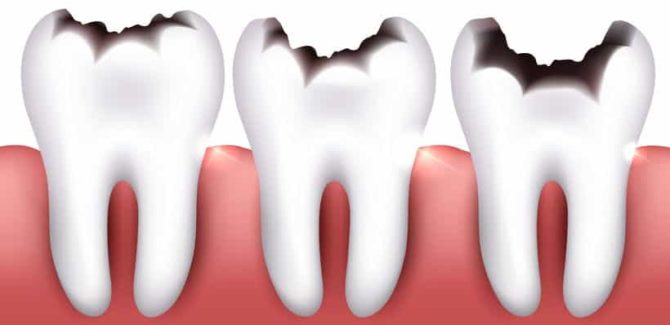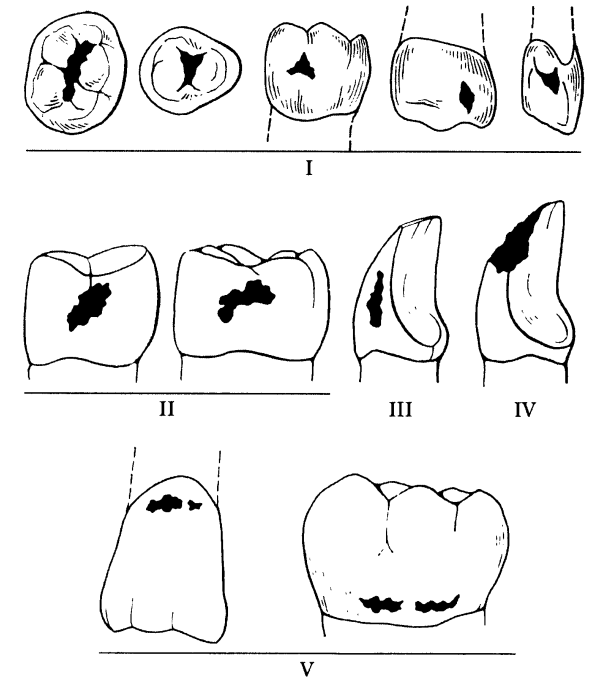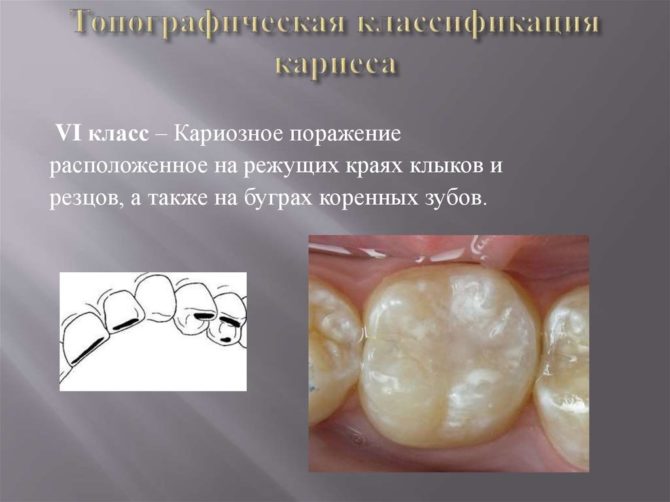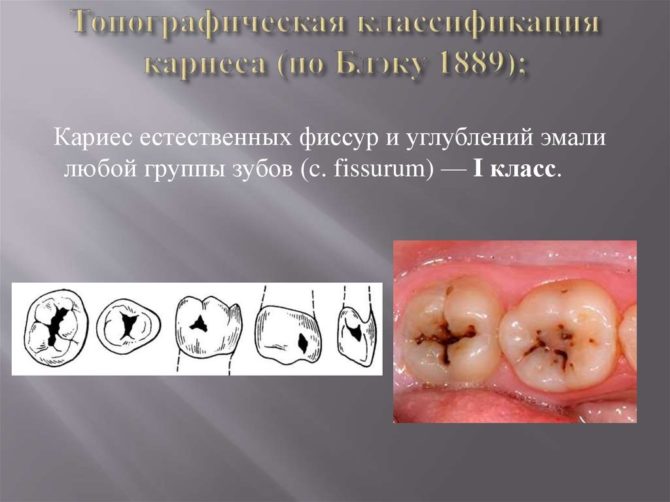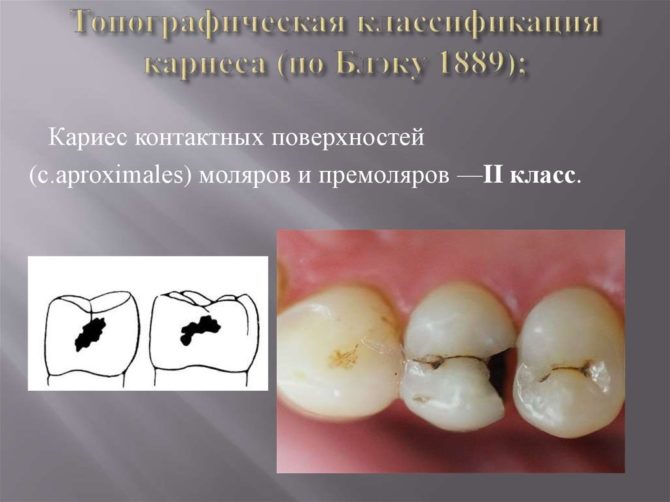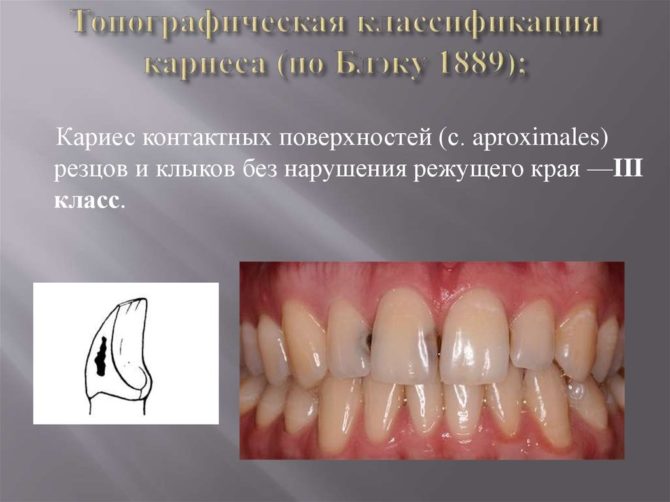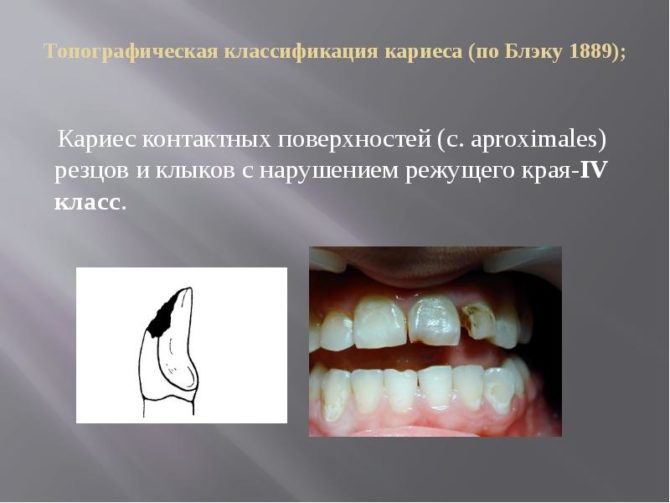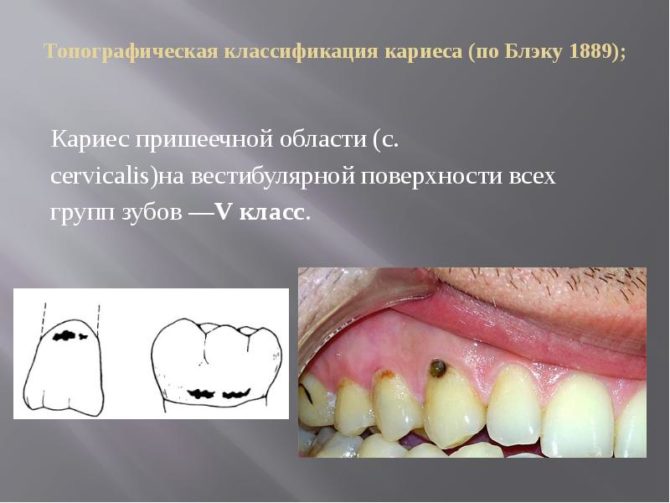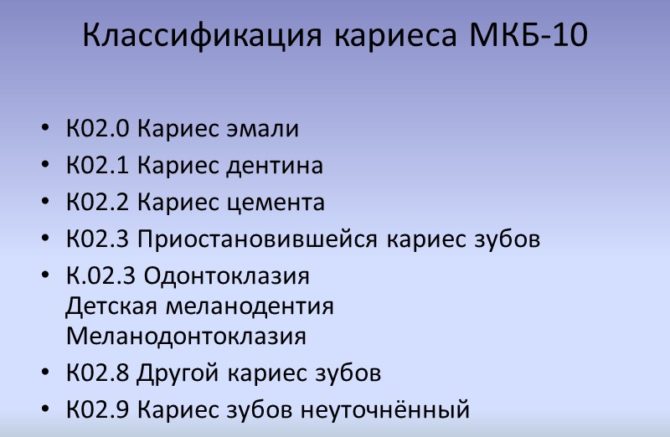Classification of dental caries according to Black and the WHO system, especially the preparation of cavities
In an effort to systematize knowledge about caries, doctors came up with several classification systems. The authorship of one of the most common belongs to J. Black. The classification of caries according to Black in pictures became known at the end of the 19th century. The American dentist managed to collect all the symptoms of the disease known at that time and logically distribute them into groups.
Content
The principle of classification of carious lesions
The separation of carious lesions and cavities into groups is based on their location:
- Black class 1 involves the localization of lesions in the blind fossa of the incisors and in the fissures of the molars;
- Black class 2 includes carious lesions located on the lateral surfaces of premolars and molars;
- Grade 3 according to Black indicates the lesions that appeared on the fangs and incisors, but did not violate the integrity of the cutting edge;
- Black class 4 includes destruction of cutting edges and corners on fangs and incisors resulting from the development of caries;
- Grade 5 according to Black suggests the localization of carious cavities in the cervical region.
Initially, there were five categories of caries in the classification system; later, at the insistence of WHO, another group was added to them, known as Black Grade 6. It includes damage to the cutting areas of the incisors and fangs, as well as protruding above the tooth surface of the hard tissues of the molars (tubercles).
It is worth noting that the sixth category of the disease was not approved by Black himself. It became an addition made by specialists of the World Health Organization for the convenience of using the system.
Features of the treatment of caries of different classes
The meaning of the distribution of different forms of the disease into groups is not only to facilitate the task of the doctor in making a diagnosis. Black classes are very important in dentistry, as they are a “guide” to treatment. Depending on the location and severity of the damage to the tooth tissue, the doctor chooses the method of preparation of the cavity, the method of installing filling material.
I class
Incorrectly performed treatment of caries of group I can cause a tooth to fall out of the cavity of a diseased tooth when chewing, the risk is due to the location of the outbreak. Therefore, in the treatment of caries, which is included in the 1st Black classification group, the dentist uses several methods to prevent such consequences:
- reduces bevel of tooth enamel;
- applies the composition parallel to the base of the cavity (when working with composites);
- lays light-curing mixtures at an angle in several layers (to change the direction of shrinkage);
- produces the final highlighting of the filling through the side walls of the tooth.
There are a lot of ways to reduce the risk of filling a filling. For the treatment of dental caries of the first class, special algorithms have been developed that take into account the features of working with different materials. All of them are reflected in the curriculum, specialized instructions for dentists.
II class
This caries class has its own characteristics. The main task of the dentist in the treatment of teeth affected by a disease of the second group is to prevent the overhang of the edge of the filling, to ensure its tight fit to the bottom of the filled cavity.
The process can be complicated by too wide or too closely spaced teeth, so one of the stages of treatment can be the rapprochement or extension of the contact surfaces using wooden wedges, holders.
All procedures, including the preparation of the tooth cavity and the extension of the contact surfaces, are performed after adequate pain relief.
III and IV classes
Features of the preparation of carious cavities of the third and fourth categories according to Black do not play such an important role, the competent selection of filling material comes to the forefront in the treatment of this type of dental caries. Since the darkened areas of the enamel are in visible places, it is necessary to use a suitable seal for the color.
For this the prepared tooth is filled with a composite of not one but two shades:
- white or milk to restore dentin;
- almost transparent for tooth enamel restoration.
The main difficulty in the treatment of cavities on visible contact surfaces is to correctly evaluate the transparency of the tooth. There are no exact criteria for this; the dentist has to rely on his own feelings. Therefore, it would be better if an experienced specialist undertakes the treatment of caries of IV and III class according to Black.
V class
According to Black's classification of carious cavities, foci of fifth grade are located in close proximity to the gums. This is the main difficulty in their treatment. If the patient is disturbed by gingival bleeding and tangible discomfort in the cervical region, the doctor may suspect a deep location of the cavity affected by rotting.
In this case, dental care is provided in several stages:
- Removal of plaque from the surface of a diseased tooth.
- Determination of the shade of a future seal.
- Anesthesia.
- Opening the cavity, cleaning out the softened tissues.
- Correction of the gingival margin.
- Treatment, filling a seal in a cavity treated with a drug.
- Polishing.
If the clinic adheres to the Black classification, the doctor will be advised to use a composite ionomer composition. Due to its properties, this material is ideal for filling large cavities.
Classification of dental caries by other systems
The classification of dental caries according to the J. Black system is not the only one; there are several dozens of other versions in the world. The most common are:
- WHO classification of caries;
- by primary - a disease that arose the first time, or its relapse;
- topographic - takes into account the degree of damage to the dental canals;
- in intensity - one tooth or several affected by caries;
- by the presence of complications - only the cavity of the tooth is affected, or the process has moved to the oral cavity, to the gums.
Despite the fact that the Black classifier with pictures, including the VI class, has become very popular in the countries of the former Union, the most convenient dentists call the WHO system (image below). It not only reveals the coordinates of oral caries, but also allows you to clarify its types and features (paused, unspecified, children's).
Black Classification in Pediatric Dentistry
The principle of determining the type of disease in children is the same: by establishing the location of the carious cavity, the doctor can attribute the diseased tooth to one or another category. The only difference in the design of the diagnosis is an additional record that the bite is milk.

